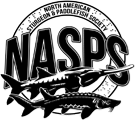Sturgeon are managed for recovery or fisheries depending on the species and location. Sturgeon are taken commercially, recreationally, and for subsistence fisheries. Given the life history traits of sturgeon, populations can sustain only a small level of exploitation (<5%). High levels of exploitation caused many populations to decline. The Great Lakes supported a very robust lake sturgeon population before becoming commercially viable in the late 1800s. Harvest was unregulated with recorded harvest of over 2 million killograms of dressed lake sturgeon taken from Lake Erie alone in 1885. Populations crashed within 10 – 20 years. While many populations are now protected, recreational fisheries (e.g., Winnebago Lake and Fraser River) and commercial fisheries (e.g., St. Lawrence River, Saint John River) exists on some sturgeon populations. Generally, sturgeon populations respond very slowly to management actions given their spawning periodicity and late age of maturity. Management actions such as stocking or stream side hatcheries to enhance early life survival have been employed for many populations to facilitate recovery. Habitat restoration (e.g., construction of spawning shoals) have proved effective for enhancing recruitment in fragmented populations. Fish passage in fragmented rivers has been met with variable success, with generally successful passage occurring only at low head dams.
STURGEONS AND PADDLEFISH
Sturgeon and Paddlefish Management
Type and hit enter
